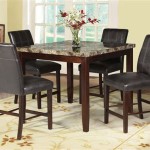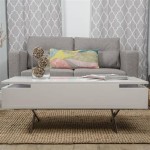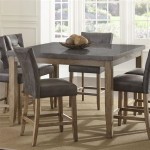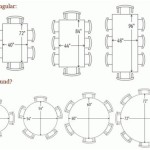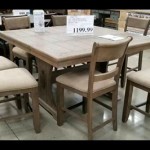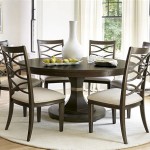Choosing the Right Rug Size for Under Your Dining Table
Selecting the appropriate rug size for under a dining table significantly impacts the overall aesthetic and functionality of a dining space. A properly sized rug anchors the dining area, defines the space within an open-concept layout, and contributes to the room's comfort and visual appeal. Conversely, an incorrectly sized rug can make the room feel disjointed, cramped, or unbalanced. This article provides a comprehensive guide to determining the ideal rug size for various dining table shapes and sizes, considering practical considerations such as chair movement and room proportions.
Understanding the Importance of Overhang
The primary consideration when choosing a rug for under a dining table is the overhang. This refers to the amount the rug extends beyond the table's perimeter. The overhang is crucial because it allows diners to comfortably pull their chairs out and push them back in without the chair legs catching on the rug's edge. A rug that is too small will result in chair legs constantly snagging, creating an uncomfortable and potentially damaging experience for both the rug and the chairs. Furthermore, a too-small rug can visually shrink the dining area, making it feel less spacious.
Ideally, the rug should extend at least 24 inches beyond the table's edge on all sides. This measurement ensures sufficient space for the chair legs to remain on the rug even when the chair is fully pulled out. For larger dining tables, an overhang of 30-36 inches may be preferable to maintain visual balance and provide ample maneuvering room. The specific overhang required will depend on the chair's size and how far it tends to be pulled away from the table during use. It is always better to err on the side of a larger rug, as a slightly oversized rug is generally less problematic than one that is too small.
To accurately determine the required rug size, measure the length and width of the dining table. Then, add the desired overhang (at least 48 inches – 24 inches per side) to both dimensions. For example, if the dining table is 60 inches wide and 84 inches long, a rug with dimensions of at least 108 inches wide and 132 inches long would be necessary to provide a 24-inch overhang on each side. This calculation serves as a starting point, and adjustments can be made based on the room's specific layout and the size of other furniture pieces in the area.
Considering Table Shape and Rug Options
The shape of the dining table plays a significant role in determining the appropriate rug shape and size. While rectangular rugs are the most common choice for rectangular and oval tables, square or round rugs can be used to create a more visually appealing and harmonious look. For round tables, a round rug is typically the best option, echoing the table's shape and creating a sense of unity. Square tables often pair well with square rugs, reinforcing the geometric form and defining the dining area within a larger space.
For rectangular or oval tables, a rectangular rug is the most straightforward choice. Ensure the rug's length and width provide the recommended overhang, as outlined above. An oval rug can also be used under a rectangular table, softening the room's angles and adding a touch of elegance. However, ensure the oval rug is sufficiently large to accommodate the chairs when they are pulled out. The key is to ensure the chosen rug shape complements the table's shape and the overall design of the dining room.
Irregularly shaped dining tables, such as those with curved or asymmetrical edges, can present a challenge when selecting a rug. In such cases, consider using a custom-shaped rug that mirrors the table's outline. Alternatively, a simple rectangular or square rug can be used, focusing on providing adequate overhang for chair movement. The goal is to create a sense of balance and harmony, rather than perfectly matching the rug shape to the table's unique form. In situations with irregularly shaped tables, professional design consultation may be beneficial.
Accounting for Room Size and Proportions
The size of the dining room itself is a crucial factor to consider when selecting a rug. A rug that is too large can overwhelm a small room, making it feel cramped and cluttered. Conversely, a rug that is too small can get lost in a large room, failing to adequately anchor the dining area. The rug should be proportional to the room's dimensions, allowing for a comfortable and visually balanced space.
In smaller dining rooms, consider choosing a rug that is just large enough to accommodate the dining table and chairs when they are pushed in. This approach maximizes the visible floor space, making the room feel more open and airy. Avoid using excessively large rugs that extend beyond the dining area, as this can visually shrink the room. Opt for lighter colors and simpler patterns to further enhance the sense of spaciousness.
In larger dining rooms, a larger rug can be used to define the dining area and create a more intimate setting. The rug should be large enough to encompass the entire dining set, including the table and chairs, with sufficient overhang for comfortable chair movement. Consider the placement of other furniture pieces in the room, such as sideboards or buffets, and ensure the rug complements their arrangement. Larger rugs can also be used to visually connect the dining area to other parts of an open-concept space, creating a cohesive and harmonious flow.
Practical Considerations: Material and Maintenance
Beyond size and shape, the rug's material and maintenance requirements are important practical considerations. Dining areas are prone to spills and stains, so choosing a durable and easy-to-clean material is essential. Wool rugs are a popular choice due to their natural stain resistance and durability. Synthetic materials, such as polypropylene and nylon, are also excellent options for high-traffic areas, offering excellent stain resistance and easy maintenance.
Consider the pile height of the rug when making your selection. A low-pile rug is generally preferable for a dining area, as it is less likely to trap crumbs and debris. High-pile rugs can be more difficult to clean and may also interfere with chair movement. Flatweave rugs are another excellent option, offering a sleek and modern look while being easy to maintain. Choose a rug that is appropriate for the level of foot traffic and the types of spills that are likely to occur in the dining area.
Regular cleaning and maintenance are essential for preserving the rug's appearance and extending its lifespan. Vacuum the rug regularly to remove dirt and debris. Address spills immediately to prevent staining. Consider using a rug pad underneath the rug to provide cushioning, prevent slipping, and protect the flooring beneath. With proper care and maintenance, a well-chosen rug can enhance the beauty and functionality of the dining area for years to come.
Addressing Common Rug Placement Mistakes
Several common mistakes can detract from the visual appeal and functionality of a dining room rug. One frequent error is selecting a rug that is too small, resulting in chair legs snagging on the rug's edge. Another common mistake is choosing a rug that clashes with the existing décor, disrupting the room's overall harmony. Failing to consider the rug's material and maintenance requirements can also lead to practical issues, such as difficulty cleaning spills or premature wear and tear.
To avoid these mistakes, carefully consider the rug's size, shape, color, pattern, and material before making a purchase. Measure the dining table and surrounding area to ensure the rug is appropriately sized. Select a rug that complements the existing décor and reflects your personal style. Consider the level of foot traffic and potential for spills when choosing a rug material. By addressing these factors, you can select a rug that enhances the beauty and functionality of your dining area.
Ultimately, choosing the right rug size for under a dining table involves careful consideration of various factors, including the table's shape and size, the room's proportions, and practical considerations such as material and maintenance. By following the guidelines outlined in this article, individuals can select a rug that effectively anchors the dining area, defines the space, and contributes to the room's overall comfort and visual appeal. Careful planning and attention to detail will ensure that the chosen rug complements the dining set and enhances the dining experience for years to come.

What Size Rug To Use In A Dining Room Green With Decor

Your Guide To Outdoor Rug Sizes Authenteak

Dining Room Rug Guide Pottery Barn Australia

How To Choose The Best Rug For Dining Table Povison Blogs

Choosing The Perfect Dining Room Rug Size

How To Choose The Best Dining Room Rug Size Color Caravan

Standard Rug Sizes The Right Sized For Every Room Jessica Welling Interiors

My Favorite Rugs Under 100

The Ultimate Guide To Choosing Perfect Size Rug For Your Dining Ta Mh

How To Choose The Best Dining Room Rug Size Color Caravan


